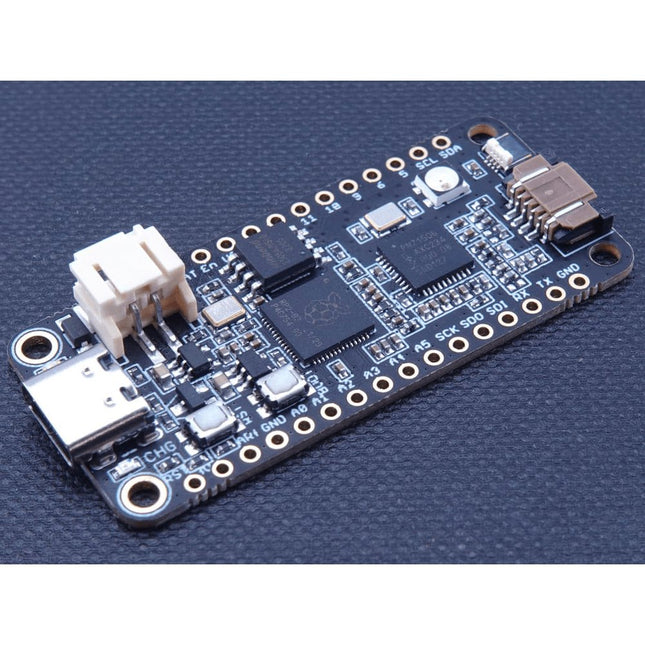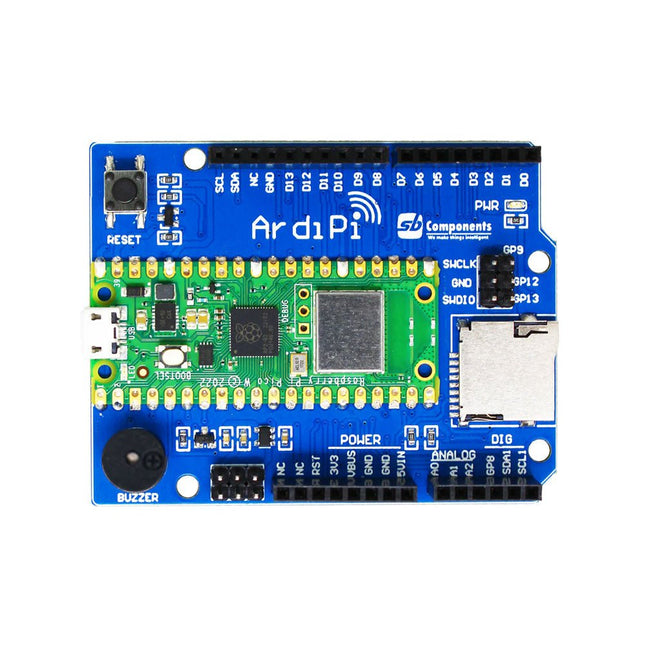Kenmerken van de Raspberry Pi Pico
Raspberry Pi's zijn kleine, veelzijdige mini-computers die je kunt gebruiken voor allerlei verschillende projecten. Of het gaat nu om simpele taken zoals het streamen van media of meer geavanceerde toepassingen zoals het bouwen van een Raspberry Pi-powered robot, de mogelijkheden zijn eindeloos! Eén van de nieuwste aanwinsten in de Raspberry Pi-familie is de Pico RP2040
De Raspberry Pi Pico is gemakkelijk te programmeren met populaire talen op hoog niveau, zoals MicroPython en of C/C++. De Pico is klein van formaat en maar liefst 2 keer zo snel als zijn voorganger, de Raspberry Pi Zero. Daarnaast is het ook nog eens een geduchte Arduino-concurrent.
Raspberry Pi Pico is een kosteneffectieve en veelzijdige controller die perfect is voor allerlei verschillende projecten. De Pico RP2040 heeft twee krachtige Cortex M0+ kernen die tot 133 MHz kunnen worden geklokt en beschikt over 264 KB SRAM, en 2 MB Flash geheugen.
Onze Raspberry Pico producten: Van boards tot modules & boeken!
Het beheersen van de Raspberry Pi Pico doe je aan de hand van 50 projecten met Micropython in ons Raspberry Pi Pico Essentials boek. Met dit boek heb jij praktische inleiding in de wereld van Raspberry Pi Pico in combinatie met deze programmeertaal.
Of kies voor een 3.5" inch Waveshare touch display module met een soepeler aanraakeffect dan AD-gestuurde oplossingen. Dit touchscreen wordt geleverd met wordt geleverd met ontwikkelingsmiddelen en handleiding (voorbeelden Raspberry Pi Pico C/C++ en MicroPython)
De officiële Raspberry Pi Pico producten kunnen wij dankzij een officieel partnership met Raspberry, rechtstreeks van de producent zijn fabriek halen. Dit houdt in dat wanneer Raspberry een nieuw product lanceert deze op de lanceer dag te leveren is.
Andere toepassingen voor jouw Raspberry Pi
In het aanbod op Elektor Store vind je verschillende andere toepassingen voor de Raspberry Pi Pico waarmee je jouw projecten een nieuwe dimensie kunt geven. Een van de meest populaire andere toepassingen zijn afkomstig van Waveshare en Pimoroni. Beide zijn leverancier en fabrikant van educatieve, industriële en hobbyistische elektronica.







